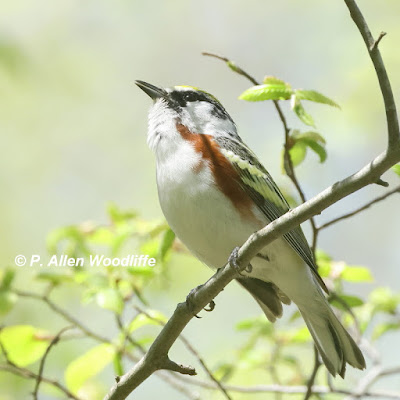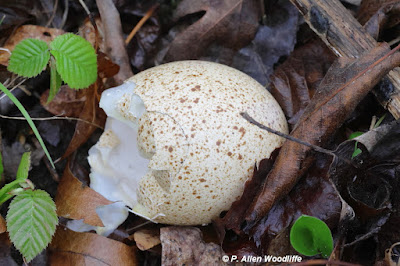The month of May is typically prime birding season, as most readers will be well aware. While the weather of 2025 has not been ideal for some migration movement, there have been some very good days, and lots of the expected migrants have put in an appearance in varying numbers.
I have been out from time to time, but not as often as I used to. The month of May has been occupied by many other things, as it was just a year ago, that my wife and best friend of almost 48 years passed away. Monday, May 26, is the exact one year anniversary of her passing. Regular readers will be aware of a special blog I posted a few days after she departed from her earthly life, and you can read that blog at this link. Life has not been the same since, of course, and I may have more to say about that later in this post.
However I do try and get out on occasion, and have seen a good assortment of the mostly expected migrants. One of the highlights is to encounter my first of the year Acadian Flycatcher.
Several of the flycatchers in the Empidonax genus look fairly similar, and it always helps when you hear them vocalizing. This particular bird did not vocalize while I was within earshot, but its appearance was spot on, and it was persistent in hanging around this species prime habitat, and exactly in a place where I have found nesting birds over the last several years. So I feel 99.9% confident in it being an Acadian Flycatcher, and I will be out checking this location periodically.
Some other regular species, and certainly some that are a little less common, include the following.
Another member of the flycatcher family is this one, an Eastern Wood-Pewee.
 |
| Chestnut-sided Warbler |
Hairy Woodpeckers, shown next, are permanent residents, but can sometimes be hard to pin down for a photograph.
Next is a Least Flycatcher. It looks quite a bit like the Acadian Flycatcher, shown at the beginning, but it occurs in much more open forest edges, looks a bit grayer, and when it gives its distinctive 'che-bek' call almost repeatedly, is easy to confirm.Another member of the flycatcher family is the Olive-sided Flycatcher, which is just a migrant in this part of Ontario. They usually perch in open areas, fairly high up on a dead branch, and sometimes can be heard calling for 'quick, three beers'. I have yet to see anyone delivering beer to this bird, but they keep calling :-).A frontal view shows a bit of its grayish vest, and it doesn't have a white eye-ring that many of the smaller Empidonax flycatchers have.Another permanent resident that occasionally will be visible long enough for a photo is the Pileated Woodpecker. They are always fun to see, and photograph.One of the bird species that the majority of birders visiting Rondeau are hoping to see is the Prothonotary Warbler. It is an endangered species, and fortunately Rondeau has lots of suitable habitat. It was first discovered nesting in Canada at Rondeau back in 1929. I have been following this species in various ways at Rondeau for more than 50 years, and I have a rough draft of a booklet in preparation to feature this iconic species. I got the first draft completed in early2024, but as mentioned previously, the rest of 2024 and since has carried on with a much different set of priorities. I still hope to complete the booklet, as there is an important story to tell, so stay tuned. Maybe it will be done in time for the 2026 birding season! |
| Prothonotary male |
 |
| Prothonotary female |
 |
| Yellow Warbler back view |
 |
| Nashville Warbler |
Quite common, especially in the early part of the warbler migration parade, is the Yellow-rumped Warbler.
The rufous morph of the Eastern Screech Owl continues in its American Beech cavity, although it is getting harder to see due to the developing leaves.
Elsewhere, some shorebirds are showing up, such as this Dunlin....
...and this one is keeping an eye on the sky, on the lookout for a predator perhaps?Wild Turkeys are widely scattered across the landscape, as well as at Rondeau.I came across this egg of a Wild Turkey along the Black Oak Trail of Rondeau a few days ago, suggesting it is a recent hatch.






























Gosh Allen, your depth of knowledge and patient prowess with the camera never cease to astound!
ReplyDeleteThank-you! It is always fun to get out, and fortunately in the digital age, it is a lot easier to take lots of photos and choose the best ones.
DeleteStanding by!
ReplyDeleteThanks, Paula. The new-themed blog has now begun, and has a link to my Nature Nuggets posts.
Delete